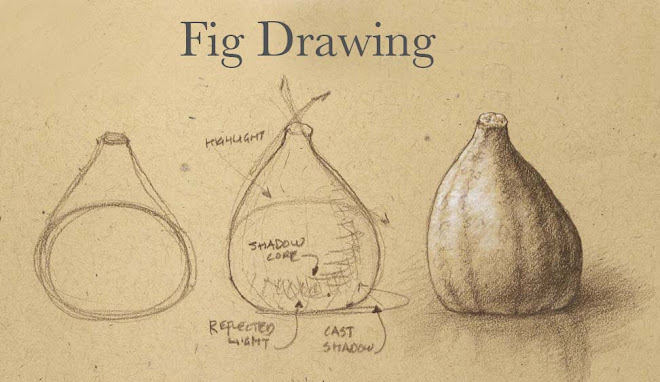
A new school year begins and new anxieties fly around the classrooms! After several students told me privately in the first week of class that they're really scared of and not very good at drawing (and I vowed to argue with them until the gave in), I began to ruminate on the fear that hovers around the act of drawing.
Drawing has a particular and seemingly universal anxiety connected to it. There are so many other activities that people are happy to not be especially experienced or even good at, where the stakes are generally much higher, like cooking a meal, or writing. There's a sense that people are embarrassed that they lack a basic syntax of image-making, and will look foolish if their efforts are 'wrong.'
It's connected to what happens around the age of 9 or 10 (maybe younger now in our media-saturated age) when as children we begin to judge our drawings, comparing them to other art and the world around us and feeling increasingly aware of the gulf in appearance - when before we were happy just in the mark-making and (key point here) telling stories. The sense of self-criticism, where we compare our drawings to other kids' drawings or comic book art or whatever, becomes for many people how we think about drawing. The way back to happy, engaged, responsive drawing is to simply think a different way. That's all.
This is what I've been able to glean from reading about drawing, from John Ruskin to contemporary comic artists: the secret is to teach yourself to narrate the action of your drawing as you draw. You're drawing the figure, your pencil delineating the arm, and you're thinking to yourself "This line bends slowly around like so, then curves Boom! into this bit like this, then is slightly slightly bending out the other way until it whips around the hard point of the elbow like that …" And if you really engage yourself in the moment by moment movement of your pencil point across the geography the body (or the still life of tomatoes or view of the Chrysler Building or whatever) you'll simply drown out the self-critical voice, until it fades to a barely discernible whisper.
So I am suggesting that the way to deal with the neighbors yelling loudly next door is too blast Bach on your stereo until the neighbors eventually give up yelling. It sounds strange but it's what I've been able to figure out, and it seems to work.
I'm certain that this drawing anxiety is universal, and even Da Vinci or Raphael dealt with it, no matter that their drawings look like they revel in their angst-free mastery. And recognizing that your fear that you should really draw better is not your private dark secret but something you share with every single human - since those people who first rubbed charcoal on cave walls and made leaping deers in the fire light - should help put your anxiety in its proper place.


 So many figure drawing sessions begin with the warm up, where the model moves through a series of short poses, maybe 30 seconds each. As a student, and quite a long while after, I patiently endured this segment of class, dutifully scribbling in my sketchbook until the longer poses came around, when I could finally 'draw.' Now, in my maturity, I find the whole process wonderful, and I always leave a sketchbook laying open to a blank page at night so I can wake up in the morning and start the day scribbling.
So many figure drawing sessions begin with the warm up, where the model moves through a series of short poses, maybe 30 seconds each. As a student, and quite a long while after, I patiently endured this segment of class, dutifully scribbling in my sketchbook until the longer poses came around, when I could finally 'draw.' Now, in my maturity, I find the whole process wonderful, and I always leave a sketchbook laying open to a blank page at night so I can wake up in the morning and start the day scribbling.

